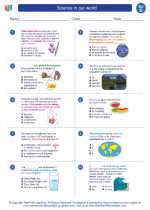Synapses
A synapse is a specialized junction between two neurons or a neuron and a target cell, such as a muscle or gland cell. It is the fundamental building block of the nervous system, allowing neurons to communicate with each other and transmit signals throughout the body.
Structure of a Synapse
Synapses are comprised of three main components:
- Presynaptic Terminal: The end of the axon of the presynaptic neuron, which contains neurotransmitters.
- Synaptic Cleft: The small gap between the presynaptic terminal and the postsynaptic membrane.
- Postsynaptic Membrane: The membrane of the target cell (neuron, muscle, or gland) that receives the signal.
Types of Synapses
Synapses can be classified into two main types:
- Chemical Synapses: The most common type of synapse, where neurotransmitters are released from the presynaptic terminal and bind to receptors on the postsynaptic membrane.
- Electrical Synapses: These synapses allow for direct electrical communication between neurons through gap junctions, which are channels that connect the cytoplasm of adjacent cells.
Synaptic Transmission
The process of synaptic transmission involves the following steps:
- Neurotransmitter Release: Action potentials arriving at the presynaptic terminal trigger the release of neurotransmitters into the synaptic cleft.
- Neurotransmitter Binding: The neurotransmitters diffuse across the synaptic cleft and bind to receptors on the postsynaptic membrane.
- Postsynaptic Response: The binding of neurotransmitters to receptors leads to changes in the postsynaptic cell, either excitatory (depolarizing) or inhibitory (hyperpolarizing).
- Neurotransmitter Inactivation: The neurotransmitters are either broken down by enzymes or taken back up into the presynaptic terminal through reuptake.
Importance of Synapses
Synapses play a crucial role in the functioning of the nervous system, allowing for processes such as learning, memory, and motor control. They also underlie the complex network of communication that enables the brain to process and respond to various stimuli.
Study Guide for Synapses
To understand synapses, it's important to focus on the following key points:
- Describe the structure of a synapse and the roles of the presynaptic terminal, synaptic cleft, and postsynaptic membrane.
- Differentiate between chemical and electrical synapses, and explain their respective functions.
- Explain the process of synaptic transmission, including neurotransmitter release, binding, postsynaptic response, and neurotransmitter inactivation.
- Discuss the significance of synapses in the nervous system and their role in neural communication, learning, and memory.
◂Science Worksheets and Study Guides Fourth Grade. Science in our world

 Worksheet/Answer key
Worksheet/Answer key
 Worksheet/Answer key
Worksheet/Answer key
 Worksheet/Answer key
Worksheet/Answer key
 Vocabulary/Answer key
Vocabulary/Answer key
